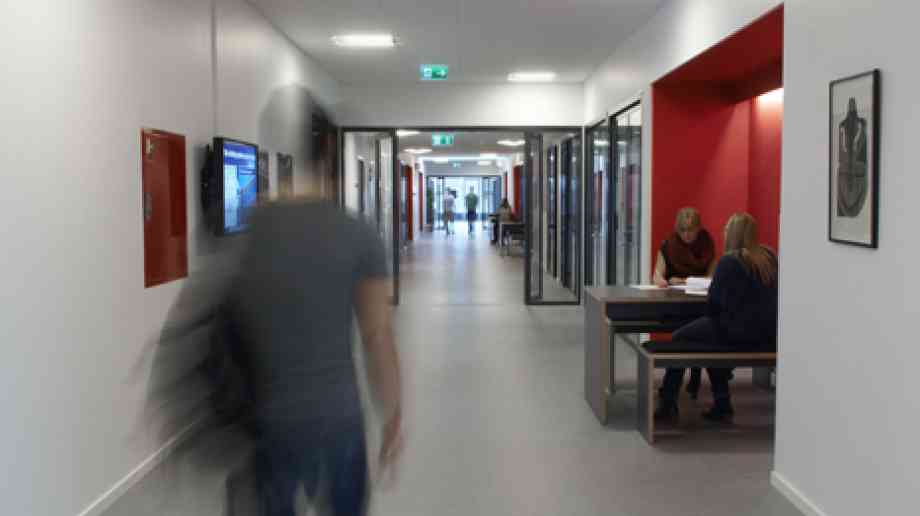
Illuminating the school environment
There is so much more to educational lighting that just cost and energy efficiency. Bob Bohannon, the Lighting Industry Association’s head of policy & academy, shares what should be considered when specifying lighting in schools
2021 is proving to be a very interesting time in lighting for education, with many competing factors all requiring our attention. The most current topic is of course Covid-19 and the return of our pupils and students to the classroom, seminar room or lecture theatre after weeks and months of isolation. For some, working at home online benefitted them, but many more needed the social contact of their fellow students and the stimulus from that inspirational teacher, and this teaches us something very important about lighting – lighting is for people.
Educational lighting, especially school lighting too often is driven by just three things: delivery of a uniform textbook 300 lux to the horizontal plane (the desktop), energy efficiency and capital cost. But our students didn’t come back to look at the floor or the desktop, they came back to interact with their fellow pupils and the teacher – life is lived on the vertical plane, not the horizontal. So how does this translate in good lighting?
In a word, modelling (for more information see the modelling index in EN 12464-1). Not only do faces need to be lit, but they also need to be lit sensitively to prevent a person unintentionally appearing hard or angry. Cylindrical illuminance gives an average across the face, modelling index shows how well this is distributed. This is especially important for children with hearing impairments that may rely to a greater or lesser extent on lip-reading or to children with a variety of conditions that are sensitive to perceived mood or response (as opposed to actual mood or response).
We can also go the extra mile with some lighting interest, rather than just that grid of lights in or on the ceiling, which may or may not have the luxury of controls for AV or daylight, what about adding just a few spotlights or downlights to pick up artwork or topic work on the walls? The capital cost and energy consumption are tiny compared to the creation of a far more visually stimulating space, with the highlighted artwork giving some contextual pattern – after all a classroom is there to stimulate interest, isn’t it?
The use of LEDs for our lighting is now almost universal, with remaining fluorescent schemes being replaced to save energy and maintenance. But those three letters LED cover a huge amount of suppliers from the competent to the less so and a range of products from the excellent to those where value engineering has badly compromised the light fitting or the scheme. Nowadays an LED lit classroom does not need to be cold white to be energy efficient, there is no excuse for using drivers that create flicker and excess glare just reduces both the student’s and teacher’s visual comfort and ultimately learning outcomes and productivity.
Students of lighting sometimes dread their lectures on colour, it’s a complex topic. But let me share a few hints and tips. Lower cost LEDs tend to be very poor in rendering reds, so ask whether yours have a good R9 value. We can now change the colour of the lighting using controls, it’s called Human Centric Lighting, some studies claim health and learning benefits, but let us remember one key fact – humans evolved under dynamic lighting. Natural varies from dawn to dusk, from day to day and through the seasons – sitting moribund under a fixed 300 lux with unchanging colour from the beginning of the day to the end is maybe not the best lighting we can provide.
Lighting for all spaces
Between lessons and lectures we need to learn that almost everywhere is a breakout space, so circulation areas can be impromptu work areas for small group working. This means a good lighting designer should not just look at what a space is called on the 2D CAD plan, but how it is (or could be) used. If it can be a breakout space, then having lighting with the flexibility to create an ad-hoc classroom space can be useful.
Lighting is inextricably linked to sight. Children with impaired vision need lighting levels that enhance their sight. (This may not mean more light but frequently better light, with enhanced contrast and lower glare). As said already, flicker and colour spectrum are important as poor solutions can result in poor behaviour and reduced concentration. Daylight, as it is with all students, is almost universally the best light, when this is not available, use high quality, carefully designed LED.
Flexibility
Daylight brings us onto another key topic in this year of focus on human induced climate change, especially with COP26 being in Glasgow. Providing solar glare and solar gain are mitigated, daylight is not just the light we evolved in, it is free, it is renewable, and it does not need carbon offsetting. Lighting controls can allow those light fittings near to the window wall to dim deeper than those nearer to the corridor wall, not just maximising energy saving but ensuring lighting levels are even across the teaching space. A lit space with no one in it is a 100 per cent waste of energy, here automated lighting controls can prevent this – remember that LEDs have no problem with frequent switching or dimming.
Modern learning spaces need to have the flexibility to accommodate different activities and teaching methods. This may be by rearranging furniture or by merging spaces (e.g., for two or three classes to work together or for community use after school hours), lighting controls can frequently enable this.
The new EN 12464 is also calling for higher light levels for classrooms, from 300 lux to 500 lux to allow their use by older people for adult education in the classroom. To prevent their over-lighting during the day, the young eyes of the average school pupil do not need as much light as a late middle-aged adult, then lighting controls become a prerequisite.
Exterior lighting
We should not forget the ancillary areas such as sports and car parks. It is common in infant/junior schools to assemble in the school yard before going into school, and many senior schools are doing this as part of Covid control. So, lighting the school yard or assembly area(s) is necessary and frequently forgotten. Exterior lighting, be it for on-site roads, car parks, security or sports pitch needs to be dark sky compliant – meaning that no light is emitted above the horizontal. Excess spill light does not just annoy the neighbours, light falling on the entrance to a bat roost delays their departure for feeding, ultimately leading to declining populations. Light into the sky cuts of our view of the stars, to help this, don’t just ensure that all the exterior lights are designed (and importantly installed) so that no light is emitted above the horizontal, but try to use warm coloured LEDs with reduced blue content – as it is this part of the spectrum that causes most sky glow.
Before we end this article and relax, let’s remember that if we are covering higher education buildings, open/free work areas are common. Here we need lighting that mixes the functionality of classroom lighting with the comfort to allow students to work in a less formal space.
To conclude, lighting should not be regarded as a distress purchase only to be judged by its capital cost and energy efficiency. In the year of COP26 we must remember that any electricity supporting lighting generated by a fossil fuel power station will need to be carbon offset to achieve net zero, but lighting is also for people. Light delivers a huge percentage of the information many of us perceive, we use it to read, learn and interact with others – good quality, well designed, dynamic, energy efficient lighting is of huge benefit to the pupils and students in our schools and colleges.
Latest News
31/10/2025 - 10:12
A growing number of UK children are now eligible for Free School Meals (FSM), yet most still aren’t taking advantage of them on a daily basis, new research reveals.
30/10/2025 - 01:28
In the wake of the Raac crisis, the DfE spent £5 million on research into the condition of school buildings, which is due to conclude in spring 2026.
30/10/2025 - 01:09
Malmesbury Primary School in Wiltshire has submitted plans for a major expansion, funded by entrepreneur James Dyson.
30/10/2025 - 00:55
Monday's Every Pair Tells a Story campaign to protest to highlight the national crisis in SEND provision.
29/10/2025 - 09:19
Estimated data from the Department for Education reveals that 470,000 pupils under 16s use local authority funded transport to get to school.







